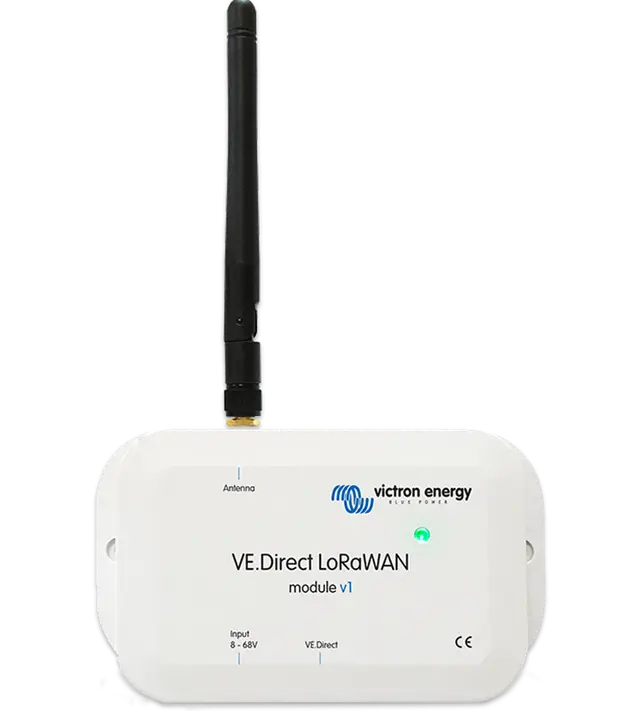All About Power
VE.Direct LoRaWAN US902-928
VE.Direct LoRaWAN US902-928
IF PRODUCT IS OUT OF STOCK PLEASE CALL 01590 679418 OR EMAIL TO COMPLETE YOUR ORDER AND OBTAIN LATEST LEAD TIMES
Couldn't load pickup availability
LoRaWAN networks are in their infancy in the US so you might have to set up your own node to make use of this device. The idea is to use the free “Network of Things” to be able to remotely monitor your VE Direct device using the Victron VRM portal. Using the VE.Direct to LoRaWAN module you can read data from your BMV, MPPT or Phoenix Inverter remotely. View information such as battery status or solar power wherever you are on your desktop or mobile phone.
- Operates on 8-68 Volts DC
- Instruction manual
- Blog article
The VE.Direct LoRaWAN (Long Range wide area network) module is essentially a radio transmitter which broadcasts data (in this instance information about the status of your Victron installation) to a nearby Internet of Things (IoT) gateway. The gateway should be within about 2km of your location if you live in a town, but could be as far away as 30km if you live in a rural location. This device uses infrastructure provided by ‘The Things Network’. Their network of gateways is constantly expanding and you can check coverage in your area. You can even expand the IoT infrastructure to your area by establishing a new gateway. The hardware cost would be a few hundred dollarss, and you would need a power supply and an internet connection. Note that whilst it’s free to use, and long range, LoRaWAN is not high bandwidth. Therefore data is only sent once an hour …some less important data is only sent once every 24 hours.
- Small electric hire boats such as those used on lakes or canals. The idea being that there only needs to be LoRaWAN coverage in the harbour – doing it this way keeps it simple with no data running costs when monitoring that all boats are plugged in and charging correctly overnight.
- Forklifts. Utilising the same idea but as it is typically a smaller area then one can monitor the total area of where the forklifts drive.
- Robot carts or other autonomous devices that have a battery and move around. For example feeding robots on a farm, pods at an airport, etc.
- Mobile road-side information displays around a construction area: just one GSM enabled LoRaWAN router in the area would be enough as all the information displays can send their data out via the one gateway.
- Fish farm feeding pens or anything else you can imagine based on the above suggestions.
Disclaimer: Product images are for illustrative purposes only and may not be an exact representation of the products.
Share

- Choosing a selection results in a full page refresh.
- Opens in a new window.

